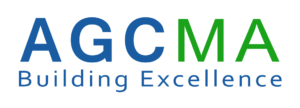Update: Maglev elevator prototype moves mankind closer to mile-high buildings
German-based ThyssenKrupp is perfecting its cable-free MULTI elevator that uses the same magnetic levitation transportation technology, known as Maglev, as high-speed trains in Asia and Europe.
The system essentially levitates elevators by leveraging magnets in the car that repel opposing magnets along the track, causing the car to hover. A separate set of coils along the track pushes and pulls the car in its intended direction, resulting in a faster climb to higher levels of a building with far less friction and resistance. A rotating section of rail that can shift the direction of the moving magnetic field allows the car to also move across the building horizontally.
The system essentially levitates elevators by leveraging magnets in the car that repel opposing magnets along the track, causing the car to hover. A separate set of coils along the track pushes and pulls the car in its intended direction, resulting in a faster climb to higher levels of a building with far less friction and resistance. A rotating section of rail that can shift the direction of the moving magnetic field allows the car to also move across the building horizontally.
Instead of ropes, MULTI uses magnetic levitation technology and linear motors to travel 60-feet per second, both vertically and horizontally.
The successful testing of these Maglev-powered elevators will open the door to the construction of taller buildings. Traditional elevator cables currently can't support both the elevator car and their own weight beyond 2,000 feet high — which is why passengers traveling to the highest floors of skyscrapers such as the Empire State Building must switch elevators as they get closer to the top.
The successful testing of these Maglev-powered elevators will open the door to the construction of taller buildings. Traditional elevator cables currently can't support both the elevator car and their own weight beyond 2,000 feet high — which is why passengers traveling to the highest floors of skyscrapers such as the Empire State Building must switch elevators as they get closer to the top.
The 1:3 scale model features two 32-foot shafts and four cabs, and it was revealed at the company's Innovation Center in Gijon, Spain one year after the MULTI concept was first announced.
The mock-up also puts the company a step closer to completing its full-size test tower for the MULTI elevator. The 761-foot-high concrete test tower in Rottweil, Germany will be completed by the end of 2016.
The mock-up also puts the company a step closer to completing its full-size test tower for the MULTI elevator. The 761-foot-high concrete test tower in Rottweil, Germany will be completed by the end of 2016.
“Our research and development team is right on track to realize this cutting-edge transport technology,” ThyssenKrupp Elevator CEO Andreas Schierenbeck said in a statement. “MULTI will be our answer to tomorrow's challenges. As the nature of building construction evolves, it is also necessary to adapt elevator systems to better suit the requirements of buildings and high volumes of passengers.”
This post was written by Justin Rice and Suffolk Construction's Vice President of Marketing and Communications Dan Antonellis. Justin can be reached at jrice@suffolk.com or follow him on Twitter at @JustinAlanRice. Dan can be reached at dantonellis@suffolk.com. Connect with him on LinkedIn here and follow him on Twitter at @DanAntonellis.
This post was written by Justin Rice and Suffolk Construction's Vice President of Marketing and Communications Dan Antonellis. Justin can be reached at jrice@suffolk.com or follow him on Twitter at @JustinAlanRice. Dan can be reached at dantonellis@suffolk.com. Connect with him on LinkedIn here and follow him on Twitter at @DanAntonellis.

